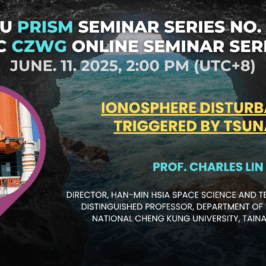Hsiang-Kuang Chang 1, 2, 3 *
Chih-Hsun Lin 4
Che-Chih Tsao 5
Chin-Ping Hu 6
1 Institute of Astronomy, National Tsing Hua University, Hsinchu, Taiwan
2 Department of Physics, National Tsing Hua University, Hsinchu, Taiwan
3 Institute of Space Engineering, National Tsing Hua University, Hsinchu, Taiwan
4 Institute of Physics, Academia Sinica, Taipei, Taiwan
5 Department of Power Mechanical Engineering, National Tsing Hua University, Hsinchu, Taiwan
6 Department of Physics, National Changhua University of Education, Changhua, Taiwan
*hkchang@mx.nthu.edu.tw
摘要 (abstract)
The Gamma-ray Transients Monitor (GTM) on board Formosat-8B (FS-8B) is for monitoring GBRs and other transients in the energy band from 50 keV to 2 MeV. GTM consists of two identical modules located on two opposite sides of FS-8B. Each module has four sensor units facing different directions to cover half of the sky. The two modules will then cover the whole sky, including the direction occulted by the Earth. Each sensor unit is composed of a GAGG scintillator array (50 mm × 50 mm × 8 mm) to be readout by SiPM with 16 pixel-channels. Based on different flux levels detected by different sensor units, the direction of the GRB event can be determined. GTM will enhance the sky coverage of current missions in the world and provide independent event localization measurement. Spectral analysis can also be conducted with GTM data. GTM is expected to detect about 50 GRBs per year. The GTM flight model was delivered to TASA in September 2023. The launch is scheduled in 2026. We will also discuss our next possible project based on the GTM instrument.
關鍵詞:Space astronomy, Instrumentation, Gamma-ray astronomy, Gamma Ray Burst (GRB)


